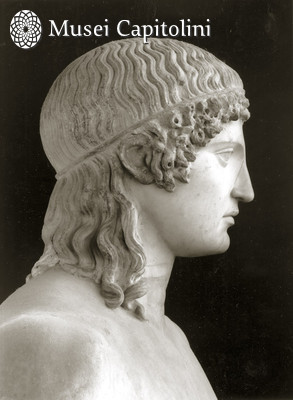Inv. Scu 648

This statue is a replica of the famous Apollo made by Phidias in the Kassel style. This style was common in the fifth century B.C. and is sometimes called the severe style. Ancient sculptors struggled to depict movement, but the Kassel style represented a literal step forward. For the first time the legs of sculptures were separated with one moved forward to suggest the intent of motion.
Sculptures of Apollo modeled off the Phidias original are common. There are more than twenty known replicas, all done in the Kassel style. The head of the Museum’s copy is ancient but likely not original to the piece.
In this work, Apollo is shown nude and stands upright with his weight carried on the left leg. His left leg and foot are slightly advanced, as if the god were taking a step forward. His right arm hangs close to his body, and the right hand originally held a laurel branch. The slightly bent left arm once supported a bow and arrows, typical attributes of the god.
The work dates to the Trajanic/Hadrianic period and it was probably found in Rome.